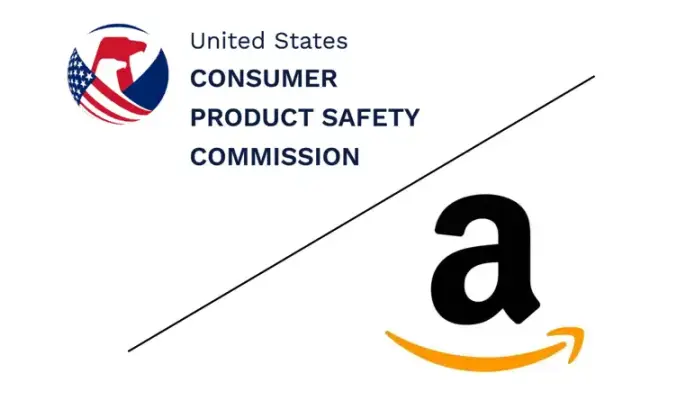
CPSIA Compliance F963 Children
CPC Certification is the key step that cannot be skipped. Whether it’s toys, children’s clothing, or baby products, as long as they are intended for children 12 years old or under, they must pass this mandatory safety certification.
In this guide, we’ll break down everything you need to know about CPC certification, and also cover Amazon’s DV (Direct Validation) program to help you navigate the entire compliance process for listing.

1. What is CPC Certification?
CPC stands for Children’s Product Certificate, established under the 2008 Consumer Product Safety Improvement Act (cpsia). It is a mandatory legal safety certification systemfor children’s products (12 years and under).
In short, CPC is the “entry permit” for children’s products in the U.S. Without it, products cannot be legally sold.
Scope includes but is not limited to:
① Toys: blocks, dolls, electronic toys, etc.
② Baby products: cribs, bottles, pacifiers, etc.
③ Children’s apparel & accessories: clothing, shoes, etc.
2. What Must a CPC Certificate Contain?
A compliant CPC must include seven key elements:
1. Applicable regULations and standards – List the CPSIA standards and testing requirements.
2. Importer and manufacturer information – Name, address, and contact details. (Note: Amazon cannot be listed as Importer of Record.)
3. Testing support evidence – Third-party test reports, including lab details.
4. Production date and place – For traceability.
5. Testing date and place – Must meet CPSIA requirements.
6. Third-party testing lab information – CPSC-accREDited labs only.
7. Signed declaration – Signed by manufacturer or importer confirming compliance.
3. Amazon Sellers: Special Requirements
When selling on Amazon, you must also comply with platform-specific rules.
(1) Mandatory contents:
① Amazon ASIN code
② Importer or manufacturer information
③ CPSC registered laboratory number
(2) Formatting rules:
① Language: English (bilingual version acceptable)
② Signature: electronic signature must include job title
③ File naming convention: `CPC_Manufacturer_ProductModel_Date.pdf`
(3) Product-specific testing requirements:
① Plush toys must undergo: small parts testing and flammability testing
② Children’s jewelry must undergo: heavy metals testing and magnetic flux testing
(4) Lab selection criteria:
① Must be listed on the CPSC official accredited labs directory (updated 2025)
② For DV validation, use Amazon-designated TIC organizations
③ Avoid labs blacklisted by Amazon
④ ISO 17025 accreditation accepted
(5) Certificate template essentials:
① Statement of compliance with ASTM F963-2023
② Product batch number
③ Photos of tested samples
(6) Amazon submission path:
Seller Central → Compliance → Product Compliance
Common rejection reasons:
① Certificate missing Amazon-required elements
② Test report validity expired (older than 1 year)
(7) Amazon DV Validation Program:
Amazon’s DV (Direct Validation) program requires TIC organizations to validate CPC-related reports.
Checks include:
① Reports issued by CPSC-accredited labs consistent with CPSC database records
② Exact match between product model, testing items, and CPC certificate details
③ Testing standards aligned with the latest regulations
4. Common Pitfalls to Avoid
Frequent errors sellers make when applying for CPC certification include:
① SKU or ASIN mismatch with product
② Incorrect standards applied (e.g., toy tested under apparel standards)
③ Missing U.S. importer information (China address used instead)
④ Non-CPSC accredited lab used
⑤ Missing CPSIA warnings in Amazon product listing (e.g., “small parts” warning)
⑥ Missing safety/compliance marks (e.g., traceability code)
⑦ Production date not listed on certificate
5. Testing Standards by Product Type
① Toys: ASTM F963-23 (lead, phthalates, etc.)
② Children’s apparel: lead content testing, small parts pull test (buttons, snaps)
③ Baby products: ASTM F2236-23 (cheMICal substance testing focus)
6. Application Process: 5 Steps
1. Lab evaluates sample and signs contract (confirm DV validation requirement).
2. Ship samples to the lab.
3. Lab conducts testing and prepares DV-compliant report.
4. Lab performs pre-check for DV validation.
5. CPC certificate issued based on report (DV-validated reports are uploaded directly to Amazon backend by TIC organizations).
7. 2025 New Rules & Support Policies
① New rule:Toys with electronic components must obtain FCC certificationstarting in 2025.
② Convenience policy:Amazon’s ACES programoffers pre-approval of compliance to speed up listing.
CPC certification is the safety passportfor children’s products entering the U.S., while Amazon’s DV validation is the platform’s extra compliance safeguard.
For manufacturers and cross-border sellers, partnering with an accredited and experienced lab—such as China JJR Lab—is critical to ensuring smooth certification and Amazon listing success.
Email:hello@jjrlab.com
Write your message here and send it to us
 WEEE Registration for Waste Electrical &Electr
WEEE Registration for Waste Electrical &Electr
 MSDS Chemical Safety Testing
MSDS Chemical Safety Testing
 What Are the Differences Between UK REACH and EU R
What Are the Differences Between UK REACH and EU R
 E-Cigarette GB 41700 Compliance Testing
E-Cigarette GB 41700 Compliance Testing
 What Are the Testing Items of California Propositi
What Are the Testing Items of California Propositi
 E-Cigarette EU TPD Testing
E-Cigarette EU TPD Testing
 Testing Certification for E-cigarettes Exported to
Testing Certification for E-cigarettes Exported to
 What is Amazon US CPC Certification?
What is Amazon US CPC Certification?
Leave us a message
24-hour online customer service at any time to respond, so that you worry!




